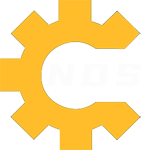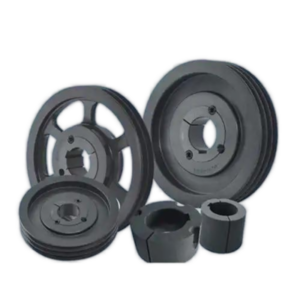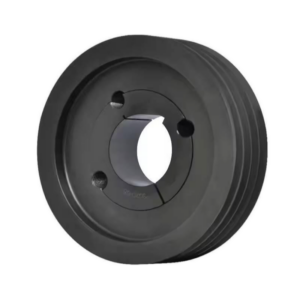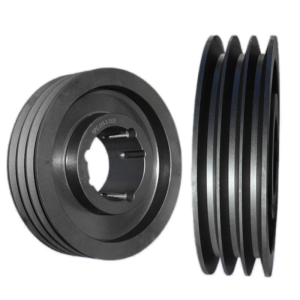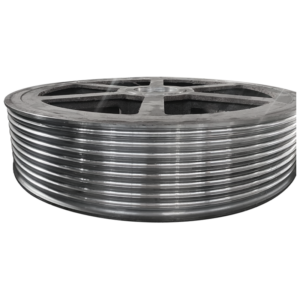In the world of industrial machinery and mechanical systems, the efficient transmission of power from a motor to a driven component is paramount. Among the most common and reliable methods for this is belt drive systems. At the heart of these systems lie two critical components working in perfect harmony: the sheave (or pulley) and the taper bushing. Understanding their individual roles and their synergistic relationship is key to appreciating the elegance of modern mechanical design.
The Sheave: The Wheel of Power
A sheave is essentially a wheel with a grooved rim, designed to guide and grip a belt. Its primary function is to transfer rotational motion and torque.
- Key Features:
- Groove Profile: The groove is precisely shaped to match the cross-section of the belt being used (e.g., V-belt, timing belt, flat belt). This ensures maximum contact and grip, minimizing slippage.
- Diameter: The diameter of the sheave directly determines the speed ratio between the driving and driven shafts. A larger driver sheave will result in a slower driven shaft, and vice versa.
- Material: Sheaves are typically made from cast iron, steel, or aluminum, chosen for their strength, durability, and ability to withstand high rotational speeds.
While the sheave is the visible component, its connection to the shaft is where the real challenge lies.
The Taper Bushing: The Ingenious Locking Mechanism
A taper bushing is a consummate problem-solver. It is a sleeved, flanged component with a tapered (conical) outer surface and a parallel inner bore. Its sole purpose is to provide a secure, rigid, and easy-to-install connection between a sheave (or any other component like a gear or sprocket) and a shaft.
- How It Works: The Principle of Tapered Interference
- The Assembly: The taper bushing is inserted into the hub of the sheave. This assembly is then slid onto the shaft.
- The Locking Action: As the cap screws on the bushing’s flange are tightened, they draw the bushing deeper into the sheave’s similarly tapered bore.
- The Grip: This action creates a powerful radial clamping force. The bushing compresses uniformly onto the shaft while simultaneously expanding the sheave’s hub, resulting in a tremendous grip that locks all three components together without the need for keys, set screws, or complicated machining.
The Synergy: Why They Are a Perfect Match
The combination of a sheave and a taper bushing creates a system with significant advantages over traditional keyed and set-screw connections.
- Exceptional Grip and Zero Backlash: The immense clamping force eliminates play between the shaft and the sheave, ensuring precise power transmission and reducing wear.
- Simplified Interchangeability and Stock Management: A single taper bushing can fit a range of shaft sizes. This drastically reduces the number of parts that need to be stocked. A workshop only needs to keep various sizes of sheaves and a standard set of bushings.
- Ease of Installation and Removal: Installing or removing a sheave becomes a straightforward task. Tightening a few screws secures it; loosening them releases it. This saves valuable time during maintenance and component changes.
- Reduced Damage to Shafts: Traditional keyways and set screws can score and damage shafts. The uniform clamping of a taper bushing distributes pressure evenly, preserving the integrity of the expensive shaft.
- Accommodation for Standard Bores: Sheaves can be manufactured with standard tapered bores, and the bushing adapts them to the specific shaft size, simplifying manufacturing and lowering costs.
Common Applications
You will find sheaves and taper bushings hard at work in a vast array of applications, including:
- Industrial Fans and Blowers
- Conveyor Systems
- Agricultural Machinery (e.g., combines, balers)
- Processing Equipment (e.g., pumps, compressors)
- Automated Material Handling Systems
Conclusion
The sheave and taper bushing are more than just individual components; they are a brilliantly engineered partnership. The sheave provides the interface for power transmission, while the taper bushing provides the robust, reliable, and user-friendly means of attachment. This combination offers a perfect blend of performance, versatility, and maintenance efficiency, solidifying its status as the backbone of countless belt-driven power transmission systems across the globe. Their enduring design is a testament to the power of simple, effective engineering principles.
